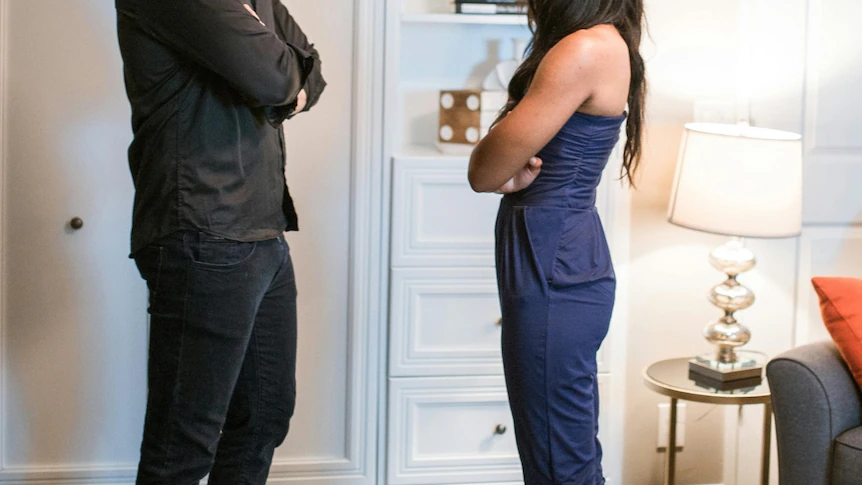Copyright thenassauguardian

Athlete’s foot is a pretty common foot infection. One shocking statistic says, at any given time, 15 percent to 25 percent of the world population has an active case of athlete’s foot. Some people walk around for years with this fungal infection without even realizing it. Athlete’s foot, or tinea pedis, is a common fungal infection of the skin that typically appears on the feet especially between the toes and can cause an itchy, red, and flaky rash, burning, or water blisters. The infection is caused by a type of mold-like fungus called a der-ma-to-phyte which grows in warm, moist environments. It loves sweaty feet that are in shoes for long periods. The infection can spread through contact with contaminated surfaces like floors and towels, or by direct contact with an infected person. If you think you’re part of that 25 percent, it’s important to do something about it. It may be that you want to try a home remedy first, like 80 percent of people do, to treat foot conditions before going to the doctor. But if it is not effective, seek help at the pharmacy or at your podiatrist’s office. Foot fungus won’t just go away on its own. And using home remedies instead of proven treatments may cause more harm than good – or at the very least delay treatment and cure. People with medical conditions that make their feet more vulnerable to infection and other serious complications should seek medical attention right away rather than trying home remedies. Their conditions include diabetes, immunocompromised or immunosuppressed, circulation problems like peripheral artery disease (PAD) and peripheral neuropathy. Dos and don’ts Home remedies are attractive because they don’t cost much, and you don’t have to change your routine and go to the doctor or pharmacy. However, most home remedies aren’t well studied and some can even make the problem worse. There’s little evidence supporting the use of home remedies for athlete’s foot. Remember, every day you are not treating your foot fungus with prescription medication, there is increased risk of it spreading or getting worse. Common home remedies used for athlete’s feet in the past Tea tree oil: Tea tree oil is a popular and powerful antifungal and antiseptic agent. Diluted tea tree oil applied directly to the affected foot can help eliminate the fungus and prevent it from spreading. For best results, mix several drops with a carrier oil, then apply it twice daily. This foot fungus home remedy can soothe itching and irritation while fighting the infection at its source. Lavender oil: Lavender oil is a fragrant essential oil with antifungal properties, making it a useful foot fungus home remedy. It not only fights the fungus but also helps soothe irritated skin. Mix lavender oil with your preferred carrier oil and apply it to the infected area before bedtime. For added benefit, you can wear socks overnight to allow the oil to penetrate deeply. Oregano oil: Oregano oil contains thymol and carvacrol, which have strong antifungal properties. Mix several drops with carrier oil to treat foot fungus and spread it to the affected area daily. Apple cider vinegar: It is another home remedy you can try. Its acidic nature creates an unwanted environment for the fungus, helping to eliminate it. Mix equal parts of the vinegar and water, and soak your feet in the solution for 15 to 20 minutes. This ingredient can also help restore the skin’s natural pH balance, promoting faster healing. Baking soda: Baking soda is a common, yet versatile home remedy for foot fungus, known for its ability to neutralize odor and absorb excess moisture. Moist environments are breeding grounds for fungi, so keeping your feet dry is crucial. Sprinkle baking soda inside your shoes, or create a paste with water and apply it to the affected areas. This solution can help dry out the infection and prevent it from spreading. Garlic: Garlic is widely recognized for its antifungal properties, making it one of the popular home remedies for foot fungus. Allicin, a compound found in garlic, can inhibit the growth of fungi. To use garlic as a foot fungi solution, crush a few cloves and spread the paste to the infected area. Leave it on for about 30 minutes before rinsing off. Repeating this process daily can help clear up the infection quickly. Coconut oil: Coconut oil is soothing and effective against various types of foot fungus. Apply it to the infected area and let it absorb into the skin. For persistent infections, you can use coconut oil in combination with tea tree oil. This home remedy for foot fungus works best after washing and thoroughly drying your feet. Epsom salt soak: An Epsom salt soak is a relaxing and effective treatment. It can help relieve inflammation and pain while removing toxins from the infected area. To prepare, dissolve a cup of this salt in warm water and soak your feet for 20 to 30 minutes daily. The water does not have to be hot. Yogurt: Yogurt, mainly plain, unsweetened yogurt, contains probiotics that can help combat fungal infections from the inside out. Applying yogurt directly to the affected area is also a home remedy for foot fungus. The beneficial bacteria in yogurt help restore the balance of microorganisms on your skin, effectively fighting the fungus. Hydrogen peroxide: Hydrogen peroxide is an everyday household disinfectant that can be used for foot fungus. It works by breaking down the fungus and disinfecting the skin. Soak a small cotton ball in the solution and apply it to the affected area. Essential hygiene practices that can prevent athlete’s foot Keep feet clean and dry: Wash your feet daily with soap and water, and dry them thoroughly, especially between the toes. Change socks frequently: Wear clean socks every day, and change them more often if your feet get sweaty. Opt for moisture-wicking materials like wool instead of nylon. Wear breathable footwear: Choose shoes made of materials that allow your feet to breathe and avoid tight, closed-toe shoes. Allow shoes to air out by alternating between pairs every couple of days. Avoid public showers and pools: Avoid walking barefoot in public places like locker rooms, showers, and pools. Do not share personal items: Avoid sharing towels, shoes, and socks to prevent spreading the fungus. Clean shared spaces: Disinfect your home, including floors and bedding, especially if someone in the household has athlete’s foot. Disinfect shoes: Disinfect your shoes regularly with a spray or by using UV-C light devices to kill fungal spores. When to see a doctor If you think you have foot fungus that’s not getting better, or if it’s getting worse, it’s spreading to other parts of the foot like the nails or the body, it’s time to see your primary care provider or your podiatrist, right away. There are several tests they can do to identify the cause and extent of the infection. The doctor will find out what is going on and prescribe the best treatment to kill the fungus. Usually, antifungal products are used. Apply an antifungal cream, spray, or powder to clean, dry feet. Common active ingredients include clotrimazole, terbinafine, miconazole or tolnaftate. Continue use. Keep applying the product for one-to-two weeks after the infection is gone to prevent it from coming back. Combination therapy may include using pills as well as the creams to treat the infection. If you have inflammation as well, a mild corticosteroid may be used along with an antifungal agent. • For more information, email info@familyfootcentre.com or visit www.foothealthfacts.org or www.footlogix.com. To see a podiatrist visit Family Foot Centre on #45 Daffodil Avenue, Independence Highway or call 605-3668; Bahamas Surgical Associates Centre at Hill Top Medical, telephone 603-1814/5. In Grand Bahama visit Lucayan Medical Center on East Sunrise Highway or call 373-7400.



